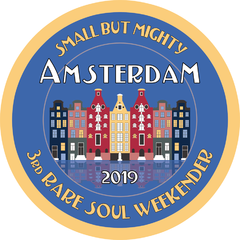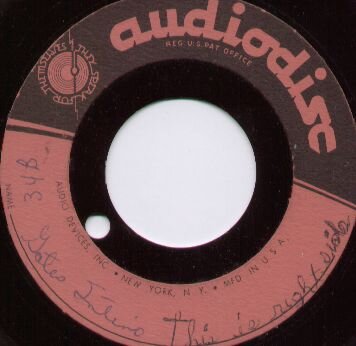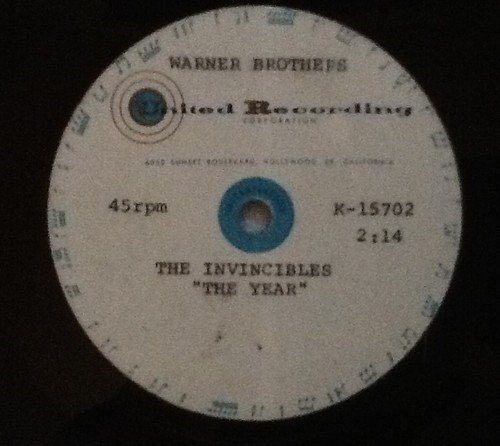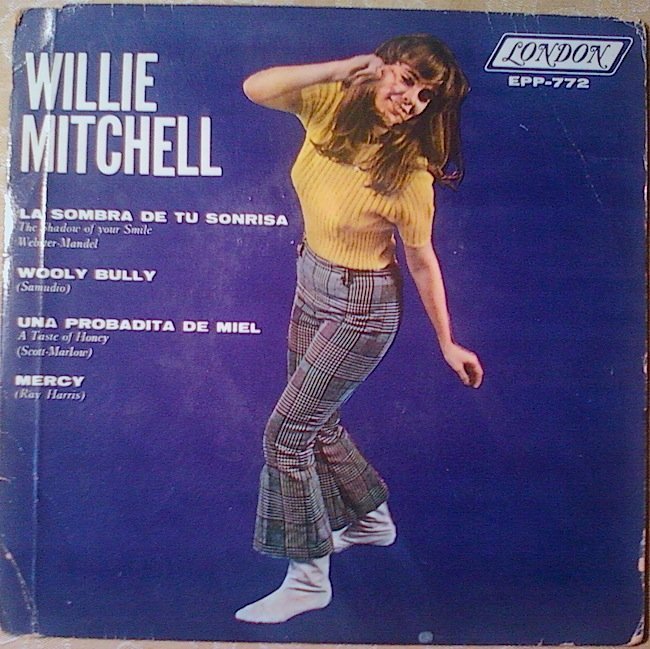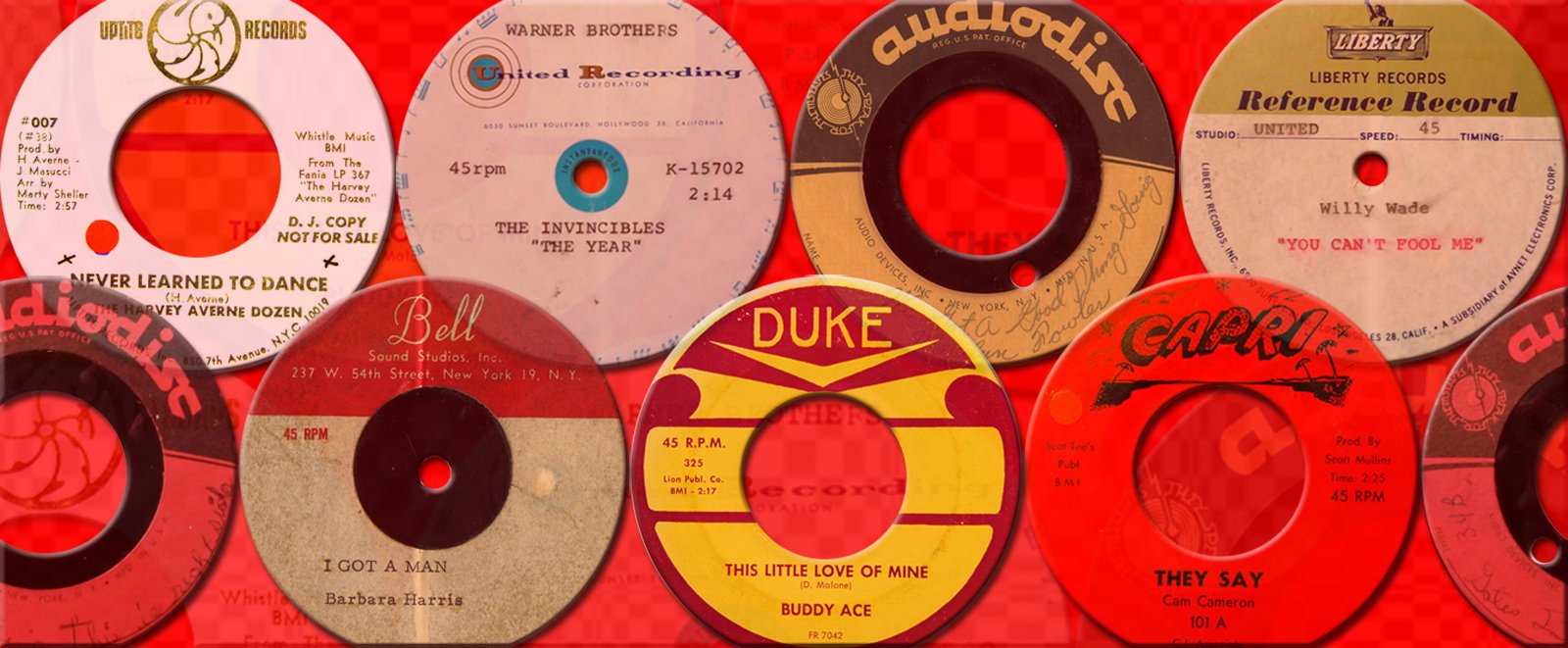
Everything posted by Amsterdam Russ
-
Millie Rodgers - Black Coffee
Where's the coffee?
-
When Did We Start With Ovo
In the 100 Club (and Stafford) of the 80s, Keb Darge was playing sounds like "She's Fire" off carvers was he not? Isn't this documented on this site? Tragically (for me), I remember being at the first Putney Bridge soul nights in London (c.86?) and being gobsmackingly disappointed to see "a well known DJ" playing Stanley Mitchell's "Get it baby" on a Soul Wax bootleg. That hurt even more because I had exactly the same boot (still do) and - based on the "OVO" attitude of those I peripherally mixed with at that time on the outside fringes of the "London Elite" - made me feel that I and my records were vastly inferior. If Keb could carve (quite literally) his way brilliant and cultish way through the 80s and 90s with ready-carved 45s (and many promo carvers supplied by Adey to help future Kent LPs - and eventually 45s - along the way), why not? After all, who didn't race to the floor to dance to them?
-
Tax Scam Lp Thread
Just curious... Those behind the scenes allowed to do such things - delete/censor/modify their own involvement/posts at later dates? sorry - probably best asked/raised in or moved to feedback..?
-
Youtube "channels"
I've had a YouTube channel for a while. I find it difficult to know what to post that's original considering how often songs are duplicated on YouTube (try Sam Fletcher - I'd think it over). At the end of the day though, what I've tried to do is a) share some personal faves that weren't already heavily duplicated and, b) offer up some stuff that I think might be different. Don't have the video editing skills or software to impress visually, so hope that some sounds sort of appeal in their own way. I like them all - which is the main point of sharing them in the first place and just hope that sometimes others get pleasure in listening to them as well. https://www.youtube.com/HarveySoulFinger
-
Cleaning My Record With Pva Glue
If the Titebond leaves residual stains, it's possibly time to try another brand.
-
Cleaning My Record With Pva Glue
Here you go... The stuff I'm using is Bison Professional Wood Glue. My partner Bev buys it by the 10kg bucket (pictured), which is about 70 euros, and as mentioned, I fill up a washing up bottle with the stuff and that lasts absolutely ages. Here's a link to the product page on the company's website: https://www.bison.net...ood-glue-extra/
-
Cleaning My Record With Pva Glue
Don't know what it's called, Bob. I have it decanted into an old washing up liquid bottle. Will ask Bev what brand it is when she comes back from the studio...
-
Cleaning My Record With Pva Glue
I've used the glue method loads of times on records with values high and low and have found it to be an exceptionally effective means of cleaning 45s. I've never had a problem with milky residue. In fact, I've never seen this at all. Perhaps those that have had it aren't using a high enough quality glue, but that's just an uninformed guess on my part. I can say though that I'm using industrial grade glue (as my partner works with the stuff and quite literally has a gallon of the stuff in her workshop). If I think a 45 needs cleaning, I'll always use a washing up sponge and warm soapy water first. If the record still sounds dirty, then I'll use the glue treatment.
-
Acetates - Let's Take A Look
Willy Wade - You can't fool me - Liberty records reference acetate (don't know if this got released or not - haven't been able to find reference to it anywhere).
-
Bob Smith - Boo Kou?
I'm sure you're right. I wasn't looking to justify or "up" the price - just recalling what I thought I'd seen this on offer at...
-
Bob Smith - Boo Kou?
If memory serves me well, I've seen this offered by Pat Brady at £75...
-
Acetates - Let's Take A Look
Nice to see this thread revived... Here's two more from me: Super popcorn! Gates Intino - She just said no The Invincibles - The Year (unreleased?)
-
Margaret Little On Ebay
Perhaps the bidder has the missing piece at home!
-
Just Arrived In The Post (Or Just Bought)
The last four buys for me are: Inverts - Look out Love - Tower (bought nearly four weeks ago and not yet turned up! Finally arrived - phew!) George Freeman - Down and Out - Valiant Gates Intino - She just said no - Stadium Rockmasters - Raining teardrops - Romulus
-
It Ain't Necessarily So
Milton Grayson? This is my fave version & I'll be playing on Saturday at the Amsterdam Soul Club
-
Great Chuck Jackson You Tube Video
You mean this one? All you need to do to post a vid is paste in the url. Simple...
-
Del-Val Records
And some copies have a red sticker on both sides with the name Joe Adams covering up the name James Lawson.
-
"cancer! And My Name Is Larry" (Poll)
Aren't they the ones who go one about how Summers and Northern Soul were better in the old days? (Only joking)
-
Counts - Peaches Baby (Shrine)
Well, at least it's not John Manship's fault for a change...
-
Counts - Peaches Baby (Shrine)
I recall reading the Washington Post article some years back and was really impressed by it. Reading it again now, I have to say that I think it's possibly one of the best bits of 'Northern Soul' related journalism I've read, ever.
-
Mixed Feelings
Have to say I was more excited by the Robert Johnson 78 that showed up in the listings underneath - starting price $10,000. https://www.ebay.com/itm/robert-johnson-vocalion-sweet-home-chicago-walkin-blues-/181034259102
-
Obscure - unusual Foreign Releases
-
Brethren "can This Be Real" Teen Town Great Crossover Tune
Flip side to 'Happy Feeling'. Two good tunes...
-
Soul Singing Sportsmen
Brenton Wood - although was an athlete only at college level
-
1982 Neil Rushton Article From "the Face"
Also still got a copy of that issue somewhere. That feature had a big impact on me as a youngster who'd only recently discovered the strange world of Northern Soul! Don't think I'd even been to an allnighter then, only soul nights of various sizes around the Kent area. After reading that, and all the tales I'd already heard from mates who had the luxury of a car, and I was raring to travel 'up North' for my Northern Soul baptism (which happened to be at Hinckley to see some bloke called JJ Barnes).

